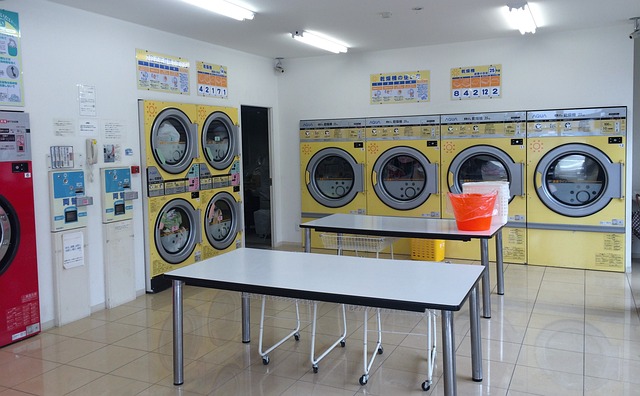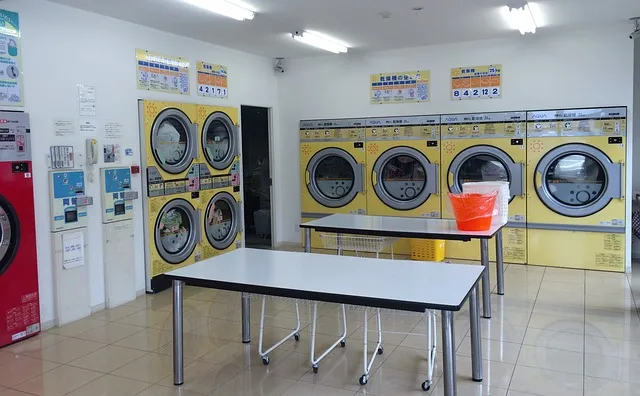How Do You Properly Clean Dryer Lint Traps?
First things first—before you get your hands dirty, always unplug the dryer. Safety first! Once that’s done, remove the lint trap from its slot, usually located inside the dryer door. You might be amazed at how much lint you find. Don’t just stop at the surface; use your hands or a small brush to get into the crevices. A vacuum cleaner with a hose attachment can be incredibly effective for sucking out stubborn lint. Think of it as giving your dryer a deep clean, just like how you’d give your car an oil change.
Next, give the lint trap itself a thorough rinse with warm, soapy water. This not only cleans away any residual lint but also helps remove any built-up fabric softener residue. Rinse it well and let it dry completely before putting it back.

Finally, don’t forget to check the dryer vent. Over time, lint can accumulate there as well, which can be a fire hazard. Use a vent cleaning kit or hire a professional if it’s been a while since the last clean.

Taking these simple steps ensures your dryer operates efficiently and safely. Plus, it keeps those clothes coming out fresh and ready to wear!
Mastering the Art of Dryer Maintenance: Top Tips for Cleaning Lint Traps
Think of the lint trap as your dryer’s first line of defense. Every time you toss a load into the dryer, tiny fibers from your clothes are caught by the lint trap. Over time, these fibers build up, restricting airflow. Picture trying to blow air through a straw clogged with gunk—it’s not going to work very well, right? The same concept applies here. A clogged lint trap can cause your dryer to overheat or even lead to potential fire hazards.
Here’s the scoop: cleaning the lint trap is a breeze. Just pull it out after every load and wipe it down with a soft brush or vacuum attachment. But don’t stop there—every few months, give it a deep clean. Soak it in warm, soapy water for a bit, then scrub it gently to dislodge any stubborn lint. This little extra step ensures your dryer runs efficiently and helps prevent any nasty build-up that could affect performance.
Let’s not forget about the ductwork, either. While it’s not part of the lint trap itself, keeping the duct clean is just as important. Lint can sneak past the trap and get stuck in the duct, so a thorough check and clean-out every year can save you from bigger headaches down the line.
By staying on top of these simple tasks, you’ll keep your dryer humming smoothly, save on energy bills, and, more importantly, keep your home safe. Plus, who doesn’t love that fresh, crisp feeling of perfectly dried clothes?
Why Ignoring Your Dryer Lint Trap Could Be a Dangerous Mistake
First off, let’s talk about the obvious—fire hazards. A clogged lint trap is like a ticking time bomb waiting to go off. Lint is highly flammable, and when it builds up, it restricts airflow, causing your dryer to overheat. Picture this: your dryer is trying to work overtime with a blocked airway. The result? An increased risk of fire. It’s like asking a car to drive with the emergency brake on—bad idea, right?
But wait, there’s more! Ignoring the lint trap isn’t just about fires. It’s also about efficiency. When lint accumulates, your dryer has to work harder to get your clothes dry. This extra effort translates to longer drying times and higher energy bills. Imagine your dryer running a marathon with a weight vest on—that’s what it feels like for your appliance when the lint trap is ignored.
Also, let’s not forget about the wear and tear. Just like a car engine needs regular maintenance to run smoothly, your dryer needs a clean lint trap to function properly. A clogged trap can strain the dryer’s motor and internal components, leading to costly repairs or even a premature breakdown.
So, next time you toss your clothes into the dryer, take a moment to check that lint trap. It’s a small step that could prevent a big disaster and keep your laundry day running smoothly. Don’t let this hidden villain turn your laundry routine into a risky endeavor.
Step-by-Step Guide: How to Effectively Clean Your Dryer Lint Trap
First off, make sure your dryer is off and cool. Safety first! Next, open the dryer door and locate the lint trap, usually found inside the door frame. Gently pull it out and give it a quick look. If you notice any visible lint, grab a soft brush or vacuum attachment to clear it away. But that’s just the beginning.
Now, run your hand along the trap to feel for any residual lint that might be stuck. For a deeper clean, use a brush with a long handle to reach into the lint trap slot. Move the brush around to dislodge any lint hiding in the corners. If you don’t have a specialized brush, a small, dry paintbrush will do the trick.
Next, inspect the vent hose that connects to the back of the dryer. Disconnect it carefully, and use a vacuum with a hose attachment to clean inside. You might be surprised at how much lint has accumulated! After vacuuming, reattach the vent hose securely.
Finally, wipe down the area where the lint trap sits with a damp cloth to remove any lingering dust. This step ensures that the trap sits snugly and your dryer operates efficiently.
Beyond the Basics: Innovative Techniques for Lint Trap Cleaning
First up, consider using a lint trap brush with a flexible handle. This nifty tool can reach the nooks and crannies of your lint trap that are often missed with just a standard vacuum. Imagine it as a high-tech broom sweeping away every last bit of lint from those hard-to-reach spots. With a brush like this, you can ensure that no lint is left behind, reducing fire hazards and improving dryer efficiency.
Another game-changer is a vacuum attachment designed specifically for lint removal. These attachments often have a long, slender nozzle that can fit into tight spaces around the lint trap. It’s like having a mini, precision vacuum cleaner that gets into all the places a regular vacuum might miss. Using this attachment regularly will help keep your dryer running like a champ and extend its lifespan.
And don’t overlook the power of a cleaning solution made for lint traps. These solutions are formulated to break down the sticky residue that lint can leave behind, making it easier to remove everything in one go. Think of it as a deep-cleansing facial for your dryer, clearing out built-up grime and ensuring everything is squeaky clean.
Finally, try using a flashlight to inspect the lint trap thoroughly. A bright light can reveal clogs or build-up that you might not notice otherwise. It’s like having x-ray vision for your dryer, helping you catch issues before they become major problems.
How Often Should You Clean Your Dryer Lint Trap? Experts Weigh In
First off, experts recommend cleaning your dryer lint trap after every load. Yes, every single time you toss a new batch of clothes into your dryer. Think of it like brushing your teeth—skipping it even once can lead to bigger issues down the road. A lint trap full of debris not only slows down your dryer but also makes it work harder, increasing your energy bills. Imagine your dryer trying to breathe through a clogged nose; it’s not pretty!
But why stop at just the lint trap? It’s also crucial to do a more thorough cleaning of the entire vent system at least once a year. Lint can sneak its way into ducts and vents, creating a fire hazard you definitely don’t want to ignore. Experts liken it to cleaning out a dust bunny’s nest—if you leave it too long, it could turn into a full-blown dust bunny invasion.
So, what happens if you don’t keep up with it? Aside from potential fire risks, a neglected lint trap can lead to longer drying times and increased wear and tear on your machine. It’s a bit like driving a car with a clogged air filter—you’re putting extra strain on your vehicle and compromising its efficiency.
In a nutshell, keeping your dryer’s lint trap clean isn’t just about maintaining efficiency; it’s about safety and saving money in the long run. Treat it as a quick, essential routine, and your dryer will thank you with better performance and longevity.


What¦s Happening i’m new to this, I stumbled upon this I’ve found It positively useful and it has aided me out loads. I am hoping to contribute & help different customers like its aided me. Great job.